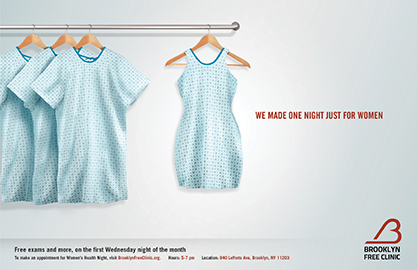Corporate missions that place patients first aren’t necessarily a revolutionary concept. On some level, every entity in the business—ad firm, pharma behemoth, device manufacturer and corner pharmacy alike—does what it does in the interest of helping patients transcend their struggles. At least that’s the case in theory, anyway.
But CDMiConnect appears to be living “Patients First” in a way that few other organizations do. Over the last year, the agency invested heavily in research designed to cement this positioning and pick up some thought-leadership cred along the way. “As always, we have to find ways to persuade our clients of our commitment to our patients,” says CDMiConnect president Deb Deaver. “What we’re doing with ‘Patients First’ is a big piece of that.”
CDMiConnect recently unleashed the first batch of results from the Patients First survey of 3,000 people, which was buttressed with a series of more in-depth follow-up interviews. The first report (of a proposed five) focused on in-office use of mobile devices and found a distinctly different environment than what had existed a few years earlier.
“The waiting room is not just for waiting anymore,” says managing partner and executive creative director Dina Peck. “[Patients] are using mobile devices actively, to make their time with the doctor more meaningful… They’re so immersed in their smartphones, when their name is finally called it’s like, ‘What?’” Look for future Patients First installments to address issues CDMiConnect regularly confronts over the course of its client work, likely including the new phenomenon of what the agency calls “digital proxies.”
“Somebody might not actively be caring for somebody else, but they’re doing the research and giving it to their friends, neighbors and loved ones. It challenges the traditional idea of what we consider to be a caregiver,” Peck explains.
As for more traditional ideas of what constitutes a successful year, it’s tough to get an accurate read on CDMiConnect’s recent success on the new-business front, owing to client covenants that restrict its ability to say much. “We want to brag more than anybody, but it’s gotten restrictive,” Deaver says. Nonetheless, she reports four significant new clients spread across the country—two on the west coast, one in Chicago and one in Boston—and reports both double-digit growth in 2013 and a similar pace in the first half of 2014.
To better arm agency execs for those conversations with new and prospective clients, CDMiConnect created what Deaver describes as “a common language for productive discussions.” That new framework, internally referred to as “Smarter Creative,” is designed to raise the bar for the agency’s content and thinking.
“We have to ask ourselves: Is this work smarter? Is it simple?,” Deaver explains. “Everything we do needs to be motivating. If it doesn’t get people to do what we want them to do, which is act, the work hasn’t done its job.”
As it moves forward relationships with long-time clients like Genentech and more recent ones like BMS and Otsuka, CDMiConnect has smartly and selectively tweaked its approach. To accommodate hesitant and/or risk-averse clients, the agency has begun to offer pilot programs—with the hope that once an organization sees what CDMiConnect can do, it’ll sign up for the longer term.
“At the end of the day, I understand where they’re coming from,” Deaver says. “Do you want to spend $40,000 of media in an area where you haven’t proved [the eventual ROI]? No, of course not. This gives them a taste.”
From the July 01, 2014 Issue of MM+M - Medical Marketing and Media








